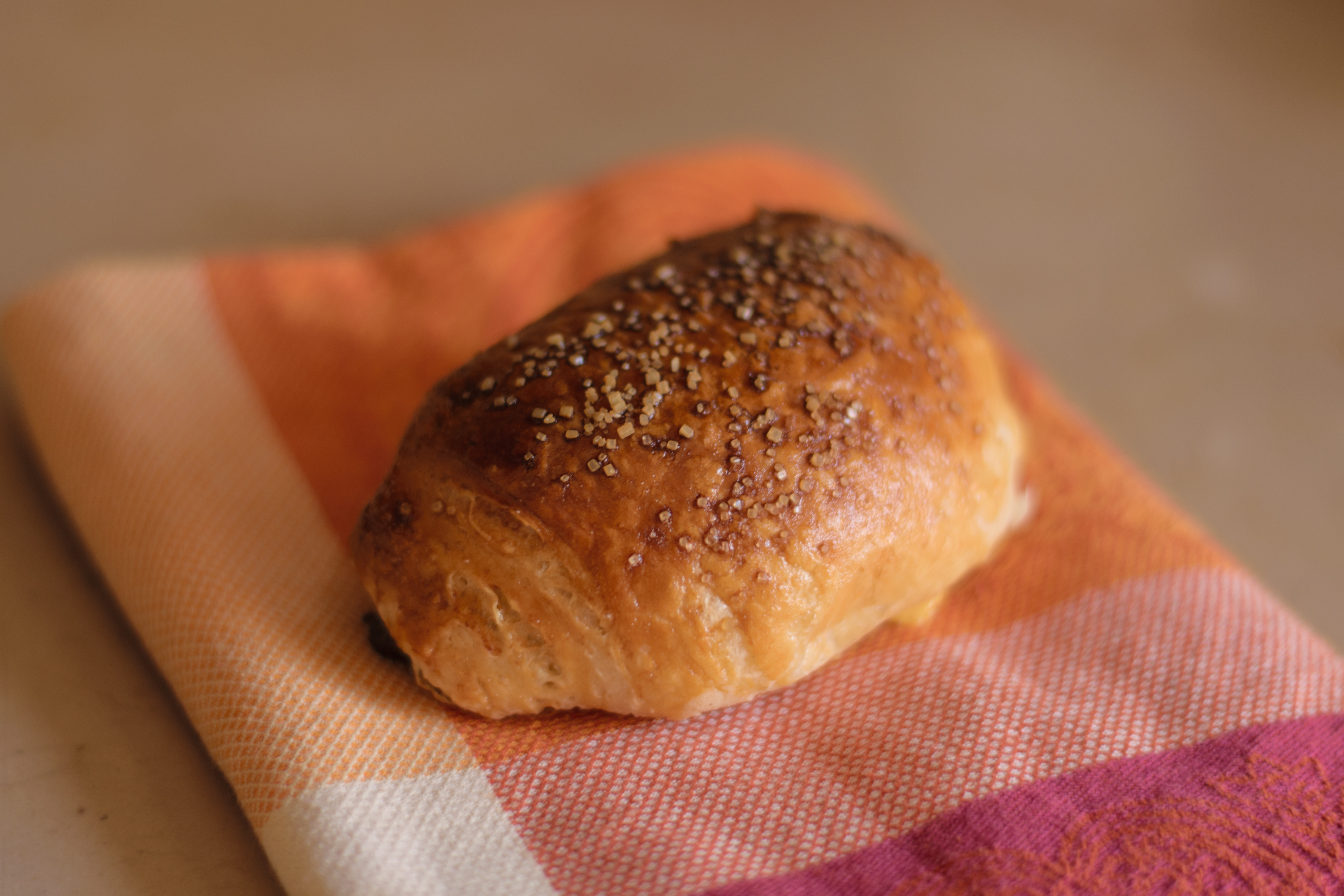French croissants are tough to master. The other day I was at my favorite pizza place, discussing with the pizza man the science of dough preparation. I casually mentioned that I was finally satisfied with my croissant-dough and the guy looked at me in disbelief.
“Making pizza dough is a walk in the park compared to croissant dough!”
He doesn’t know that, but he made my day with that sentence. It is true that in the preparation of croissants there are more things that can go wrong. Sadly, there’s no better way to learn it than doing it yourself, since croissant-making will be greatly influenced by things you cannot change if you work from an ordinary kitchen: temperature and humidity of the ambient; flour readily available in your country; kind of butter and yeast.
I’m not going to detail the procedure here since I don’t particularly innovate on the standard method of the butter square and the three/six folds. This is just about the proportions of ingredients that I found working very well for me, and a list of things that can go wrong (and how to avoid it).
Ingredients:
500g of flour – the most common one you find with no added yeast
25g of fresh yeast
10g of salt
60g of sugar
50g of butter for the dough
250g of water
50g of milk
a tablespoon of gluten
a tablespoon of powder milk
200g of butter for the beurrage
1 egg and a bit of cane sugar for the egg-wash before placing in the oven
List of things that can go wrong:
If the dough doesn’t grow one of these things might have happened:
- you used dry yeast instead of fresh one. Still possible to do it, but you must put extra care in the mixing phase, spreading the yeast evenly;
- you killed your yeast by microwaving it with milk for too long – been there, done that;
- your fresh yeast is dead. It has a surprisingly short shelf life, even when preserved properly in a fridge.
If your butter breaks in smaller pieces while rolling:
- either you applied too much strength while rolling (it’s supposed to be a gentle massage at the beginning) or
- your butter was too cold, ie: not the same consistency of your dough.
If your butter is exposed while rolling:
- either your layer of dough was too thin, or
- the temperature of your butter not cold enough.
If your butter melts and comes out of the croissant while heating:
- you could have used too much butter. Or you might have an
- uneven distribution of butter. If it’s concentrated close to the seams, it will leak more copiously.
If your croissant flattens while proofing (final fermentation):
- make sure you are letting your croissant grow in an open environment (and not, for instance, inside your oven);
- make sure that the temperature of the room where they are growing is not over 22°C. If you are in a warmer climate, work at night;
- if you proofed your croissant covered in plastic wrap, next time try to leave the uncovered. This is the one occasion in which you do want that little crust!


Post a Comment through Mastodon
If you have a Mastodon account, .